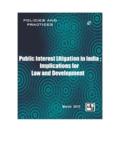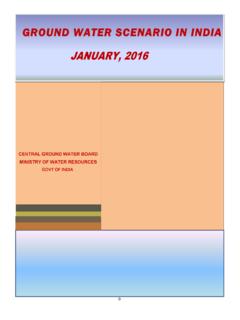Transcription of REPORT ON NORTH EAST INDIA - Calcutta Research Group
1 REPORT ON NORTH east INDIA . Core indicators State Population Population Decadal Literacy Sex ratio Official density per growth (females per languages sq. km. rate 1000 males). Arunachal 1,382,611 17 920 Hindi, Deori, Pradesh Assamese, English, local Assam 31,169,272 397 954 Assamese, Bengali (in the Barak Valley), Bodo (in Bodoland). Manipur 2,721,756 122 987 Meiteilon Meghalaya 2,964,007 132 986 Khasi, Pnar, Garo, Hindi, English Mizoram 1,091,014 52 975 Mizo, English Nagaland 1,980,602 119 931 Nagamese, English Tripura 3,671,032 350 961 Bengali, Kokborok Source: The data on population, population density per square kilometer, decadal growth rate of population, literacy and sex ratio (females per 1000 males) are available from the Census of INDIA 2011 (provisional figures). Background of Conflicts in INDIA 's northeast INDIA 's northeast traces its formation as a region to the partition of the subcontinent in 1947 and the gradual reorganization of international borders around it both before and after it.
2 As a result, it remains tenuously connected with the rest of INDIA through a narrow corridor, the chicken's neck' or Siliguri Corridor'- as it is popularly known, in northern West Bengal, with an approximate width of 33 kilometers on the eastern side and 21 kilometers on the western side. This constitutes barely one per cent of the boundaries of the region, while the remaining over 99 per cent of its borders are international with China to the NORTH , Bangladesh to the South West, Bhutan to the NORTH West, and Myanmar to the east (Bhaumik 1996). Presently the region comprises seven Indian states of Assam, Arunachal Pradesh, Manipur, Meghalaya, Mizoram, Nagaland, Tripura also known as Seven Sisters' and Sikkim incorporated into the Indian Union in 1974. With the exception of 1. Nagaland that became a state in 1963, most of the states in the region were reorganized between 1971 and 1987 (Bhaumik 1996).
3 These states cover a total area of over 255,088 sq. km. ( about per cent of the INDIA 's territory) and, according to the 2001 Census of INDIA , a population of 38,495,089 persons (roughly per cent of INDIA 's population). The region accounts for one of the largest concentrations of tribal people in the country - constituting about 30. percent of the total population - though with a skewed distribution of over 60 percent in Arunachal Pradesh, Manipur, Meghalaya, Mizoram and Nagaland taken together. With the only exception of Kerala outside it, three states of the region - Nagaland, Mizoram and Meghalaya contain an overwhelming majority of Christians ( , 87 and percents respectively). The region is characterized by extraordinary ethnic, cultural, religious and linguistic diversity, with more than 160 Scheduled Tribes belonging to five different ethnic groups and over 400 distinct tribal and sub-tribal groupings speaking about 175 languages, and a large and diverse non-tribal population as well concentrated mainly in Assam and Tripura (Bhaumik 2010).
4 While the Ahoms were successful in gradually consolidating greater part of the region under a single political unit in course of their rule (1228-1826), court chronicles of the Kacharis (1515-1818), the Jaintias (1500-1835) and the Manipur Kings (1714-1949). etc. point out how it had historically retained varying degrees of independence into the nineteenth century when the British took over the region. Colonial rule took nearly a century to finally annex the entire region and exercised its control over the hills primarily as a loosely administered frontier' area thereby separating it from the subjects' of the otherwise thickly populated plains (Das 2003). INDIA 's northeast has been the theater of the earliest and longest lasting insurgency in the country - in the Naga Hills then a district of Assam, where violence centering on independentist demand commenced in 1952, followed by the Mizo rebellion in 1966 and a multiplicity of more recent conflicts that have proliferated especially since the late 1970s.
5 According to one estimate, there are about 65 major militant organizations presently operating in the region. Every state in the region excepting Sikkim is currently affected by some form of insurgent violence, and four of these (Assam, Manipur, Nagaland and Tripura) have witnessed scales of conflict that could . at least between 1990 and 2000, be categorized as low intensity conflicts in which fatalities were over 100 but less than 1000 per annum. After the failure of the Agreement for Suspension of Operations with the Naga insurgents (1964-1967), the Government of INDIA entered into separate ceasefire agreements - renewed from time to time till today, with two of the leading factions of National Socialist Council of Nagalim (NSCN) in 1997. and 2001. The Government of INDIA and the National Socialist Council of Nagalim (Isak- Muivah) are now reportedly involved in discussing substantive issues', while trying to reach a permanent and honorable' solution to the long-standing problem.
6 Both Mizo National Front (MNF) and the Government of INDIA signed a Memorandum of Understanding in 1986 and Pu. Laldenga the rebel leader subsequently formed his own political party and became the Chief Minister of the Indian state of Mizoram. The United National Liberation Front (UNLF) the armed opposition Group active in the valley of Manipur questions the Merger Agreement' that the king of Manipur had signed with the Government of INDIA in 1949 on the ground that the king was forced' to sign it under duress outside his kingdom' (Bhaumik 2010). The United Liberation Front of Asom (ULFA) too questions Assam's inclusion in the Indian Union. Although attempts have been made to bring UNLF and ULFA to the negotiating table, no formal ceasefire agreement could yet be reached with either of these organizations (Das 1994). The Government's response to these independentist demands has so far ranged from deploying strong arm tactics of enacting extraordinary legislations (like, the Armed 2.)
7 Forces Special Powers Act 1958 etc.) and firmly dealing with it' with the help of security forces to trying to reach some form of agreement with the insurgent organizations. Not all agreements have however been equally successful (Samaddar 2004). Although landlocked on all sides, migration - whether from across the international borders or within, continues unabated thanks to a variety of factors and the region has frequently been rocked by violent tremors of acute xenophobic reactions against the foreigners'/outsiders. Inter- Group conflicts based on mutually rivaling homeland' demands (say, between the Bodos and the non-Bodos, the Karbis and the Dimasas in Assam, the Nagas and the Kukis/Paites in the hills of Manipur, the Mizos and the Brus/Reangs in Mizoram etc.) have of late sparked off widespread ethnic cleansing and internal displacement of population in the region (Samaddar 2005).
8 Tripura provides a classic case of how the tribals once a majority in the kingdom, were slowly reduced to a minority and facing the threat of being dispossessed of their land, language and culture. The earliest chronicles available suggest that the state has had a substantial non-tribal Bengali population certainly since the fifteenth century, and the 1901 Census recorded per cent of tribals in its population. This equation remained relatively stable till the early 1940s, when communal clashes in British-ruled east Bengal provoked a steady migration into princely Tripura. The trickle turned into a flood during and after Partition. By 1951, the tribal population had fallen to percent and further to per cent in 1981. The 1991 Census, however, indicated a marginal reversal of the trend, with the tribal population rising to per cent. National Liberation Front of Tripura (NLFT) one of the major rebel organizations active in the state, for example, calls for expelling all Bengalis settling in the state after 9.
9 September 1949 the date of merger' of the princely state into the Indian Union (Das 2003). Although a major problem, the Government often finds it difficult to detect and disenfranchise let alone deport the foreigners. The Assam movement (1979-1985). brought the foreigners' problem to the center of public agenda and most of the estimates made during the movement kept their number somewhere between 800,000 and 450,0000. The Asom Gana Parishad (AGP) that came to power in 1985 after an agreement involving a highly complicated procedure of detecting, disenfranchising and deporting the foreigners was reached between the contending parties, was able to detect not more than 8000 of them in course of its tenure (1985-1990) (Das 1994; Misra 2000; Baruah 2005; Banerjee, Basu Ray Chaudhury and Das 2005). Formal and Informal Actors (Plus Agendas). Insurgent Group Agenda United Liberation Front of Assam Independence and Sovereignty of Assam National Socialist Council of Nagalim Integration of Naga-Inhabited Areas' and (I-M) Special Federal Relationship with INDIA '.
10 United Peoples' Democratic Solidarity Anti-Outsider Movement All-Aruncahal Pradesh Students' Union Anti- Foreigners' Movement Peoples' Consultative Group Facilitating Talks between ULFA and GOI. 3. Jatiya Abhiwartan Do Approaches to conflict resolution policies of regional partners INDIA 's northeast refers to the easternmost region of INDIA consisting of Arunachal Pradesh, Assam, Manipur, Meghalya, Mizoram, Nagaland and Tripura. This area is ethnically distinct from the other parts of INDIA . The region is distinguished by a preponderance of the Tibeto-Burman languages. Strong ethnic cultures that had escaped Sanskritization effects permeate the region. These states form a special category. The NORTH Eastern Council (NEC) was constituted as the nodal agency for the economic and social development of these states (Samaddar 2004). The isolation of the Northeastern states began earlier as a result of British imperialism, when the region was cut-off from its traditional trading partners, like Bhutan and Burma and other parts of Southeast Asia.





